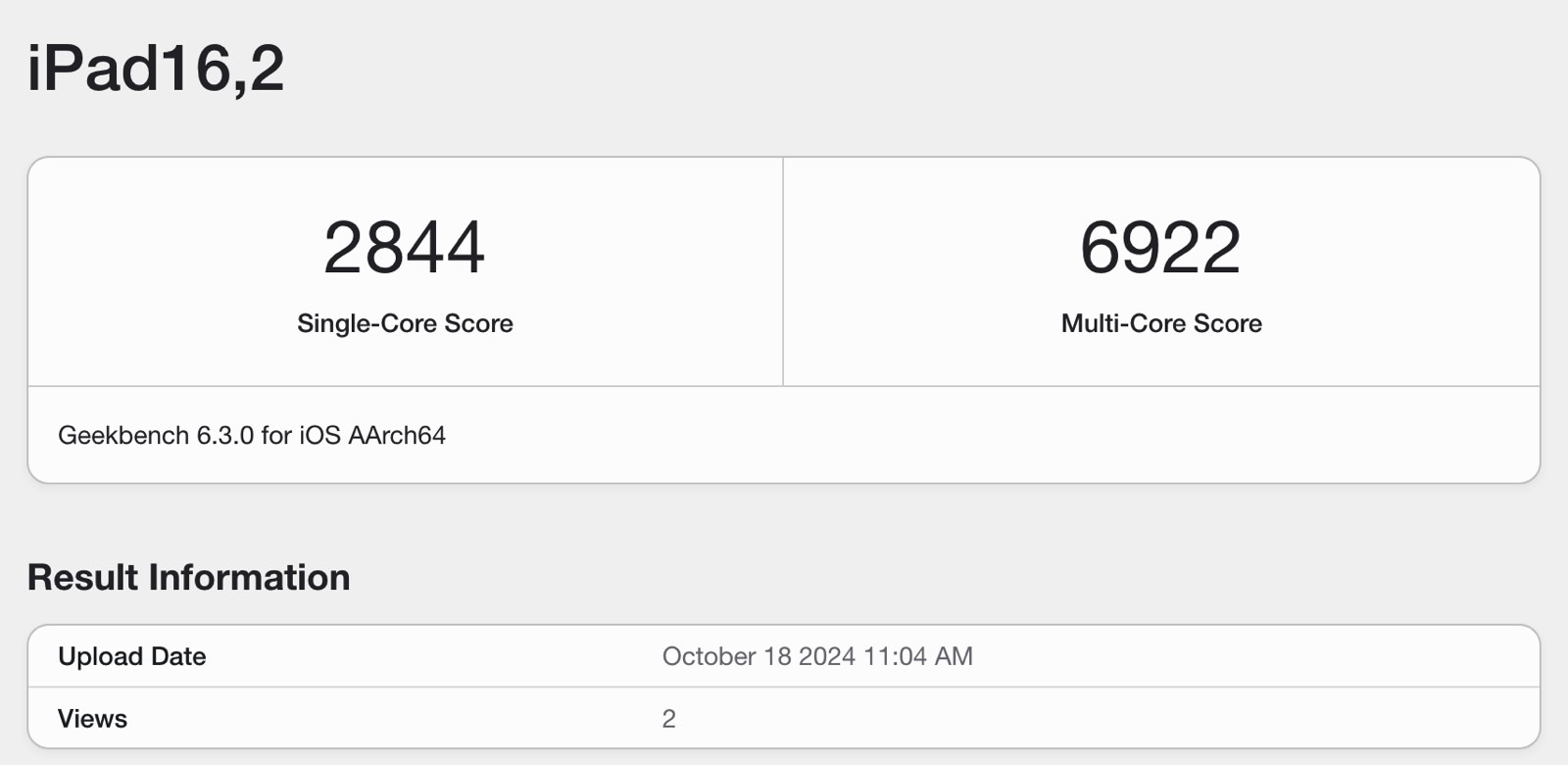Apple announced the iPad mini 7 earlier this week. While it’s virtually identical to the iPad mini 6 in terms of design, I think it’s a surprising upgrade over its predecessor. For $499, you get a tablet that can run Apple Intelligence thanks to the iPhone 15 Pro’s chipset. It’s the A17 Pro that Apple announced last year with 8GB of RAM.
Once Apple announced this tablet, we learned that the iPad mini 7’s chip is not exactly the same version of the A17 Pro that Apple used for the iPhone 15 Pro. Instead, it’s a binned version and has one less GPU core than the iPhone version.
I said at the time that the iPad mini 7 was going to be a very powerful computer, despite having a less powerful chip in terms of graphics. We now have benchmarks that prove the iPad mini 7’s performance is on par with the iPhone 15 Pro. Benchmarks also show that the smaller iPad is the second best Apple tablet you can buy, behind the M4 iPad Pro, in terms of performance.
The iPad mini 7 Geekbench 6 benchmark will be posted online a few days after Apple’s announcement, likely in time for embargo review next week. These show that the tablet scored around 2,800 points in the single-core test and around 7,000 points in the multi-core test. This test also confirms what we already know about memory. iPad mini 7 has 8GB of RAM.

By comparison, the iPhone 15 Pro model reached 2,900 points in the same single-core test and over 7,100 in multi-core scores. This shows that the performance difference between the iPhone 15 Pro and iPad mini 7 is minimal.

Also, remember that the iPhone 15 Pro performed better than the M1 and M2 chips in the single-core test (above). The iPad mini 7’s score also beats these results. The M2 chip that Apple used for the iPad Air 6 and 2022 iPad Pro models scored over 2,500 in single-core tests. However, the multi-score result is over 9,700 in favor of the Air.

To put things into perspective, the M4 iPad Pro scores over 3,700 points in the single-core benchmark. Multi-core performance is well over 14,000 points.
On the same note, we highlight the benchmark results of the A18 Pro, which followed the release of the iPhone 16 Pro in September. Apple’s best phones score over 3,400 and 8,400 on the same test. The comparison below also shows the scores for the M3 Pro MacBook Pro, which was released about a year ago.

Finally, when comparing the A17 Pro and the A15 chip that Apple used in the iPad mini 6, the latter scores better in the same tests by scoring 2,100 and 5,300 points. Apple used the same A15 chip for the iPhone 13 series.

All of this should give you an idea of how much of an improvement the iPad mini 7’s performance has been. Again, for $499, this is an incredible feat. Of course, these are just benchmarks, so real world performance is what matters most. But given that Apple still makes some of the fastest mobile and desktop chips in town, benchmarks are a strong indicator of how Apple devices perform.
We’d also like to remind you that the iPhone SE 4, which launches early next year, is rumored to have the A18 chip found in the iPhone 16 and iPhone 16 Plus smartphones. We’ll cross that bridge when we get there, but I’m already convinced that even a binned version of the A18 chip will guarantee great performance for a phone that Apple won’t be able to price above $600. I’m already convinced that it is.


